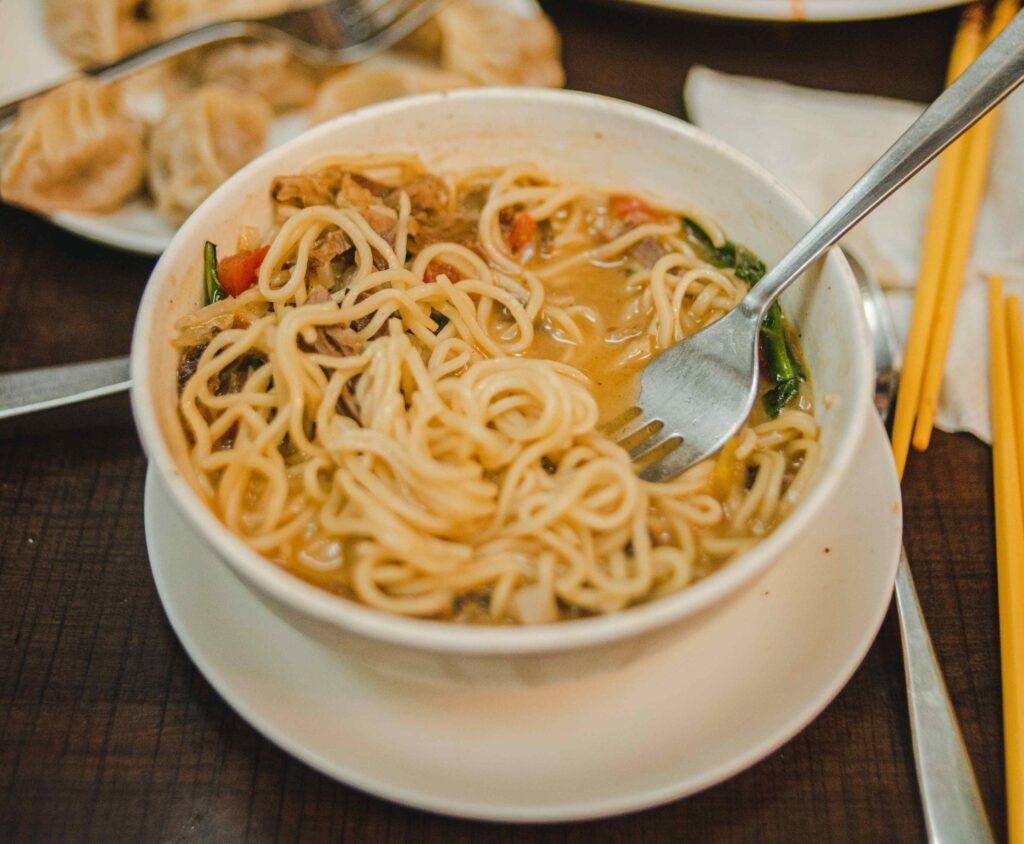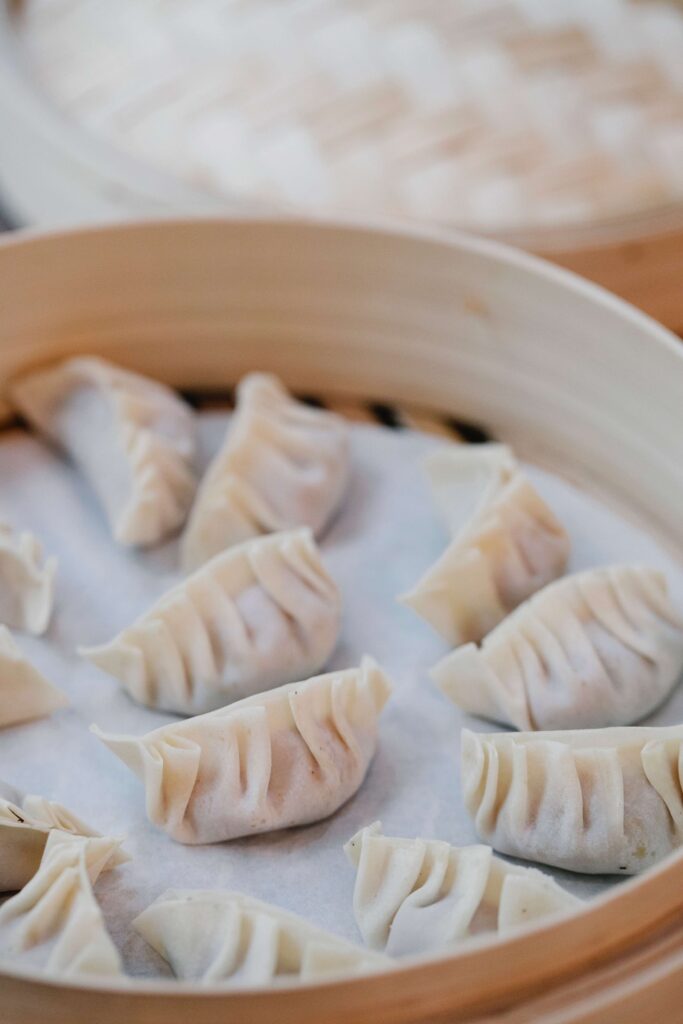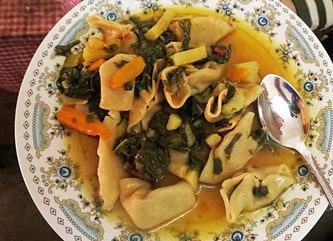The land of the high passes, Ladakh is known for being a high altitude place with many treks and Tibetan Buddhist culture. The cuisine of this area is rarely highlighted, though it is surprisingly influenced by many cultures since it was once an important stop on the Silk route. Traders from China, Middle East and especially Tibet brought goods, culture as well as their cuisine along with them, influencing the Ladakhi flavours. It is resourceful and rooted in its history of traders, war, and troubled times. The cuisine of the Tibetan Buddhist Kingdom of Ladakh reflects its traditions, lifestyle and philosophy. The picturesque place in the mountains with serene gompas and wonderful people, Ladakhi food brings the modest roots of the place onto your tongues. Hotels in Ladakh highlight the local cuisine in their menus and usually have recreational activities to learn more about the history and heritage of the region.
The region is a cold and arid desert with not much vegetation due to limited rainfall, approximately 5 centimetres each year. But the people here make the most of what is available and create delicacies apt for a mountainous desert. In a region that had temperatures dropping to almost -30 degree celsius at times, hardy crops are the only types that remain growing here. In warmer months, vegetables like potatoes, radishes, spinach and carrots are grown. Grains like barley and alfalfa are cultivated here along with apples, apricots, walnuts, and similar food. Many of these vegetables are staples here along with an array of regional meats like Yak, goats, chicken, and more.
Some of the tastiest foods from the Ladakhi cuisine are:
Thukpa: Heavily influenced by Tibetan cuisine, Thukpa is a noodle soup thickened by flour and added in a local cottage cheese called chhurphe which is prepared from Yak milk. The word ‘Thukpa’ literally means ‘overcooked’ and is hence a steaming bowl of hearty stew made in a rustic local way in Ladakhi homes. Vegetables like cabbage, onions, and mushrooms are added whenever available. Meats like chicken are also used though every household has their own way of preparing a bowl.

Mok Moks: Also known as momos in Tibetan language, these are steamed dumplings made of a wheat dough covering and filled with veggies or lightly seasoned meat. These are served with a kind of local tomato chutney. Mokthuk is also another type of dish which is basically momos served in a hot broth of a kind with locally available vegetables.

Khambir: It is a tranitionally prepared Ladakhi flatbread which is usually like a thick form of Roti. It is a staple in the region and eaten during morning hours with Butter tea with a side of either plain butter or jam made up of Apricots. Apricots are abundantly available in this region so many delicacies include the fruit like juices, jams, and more.

Chutagi – A vegetable-based pasta-style dish made with local vegetables like beans, carrots, leafy greens and fresh pasta made up of dough in a rich sauce. Many local eateries have this nutritious and tasty dish in their own versions and it is considered a signature dish for the region of Ladakh.

Gushtaba: Gushtaba is a traditional dish of the Ladakhis that goes well with a glass of thick yoghurt. The famous dish served at the Hemis Monastery is made with mutton or beef and is delicious. It is also a source of great comfort food, on good days and on bad days, so you never really go hungry.
Ladakhi food, which originates from northern India, Nepal and Pakistan, has a rich history and the reason behind this is the migration of traders that found their way into the Himalayan region. The evolution of the cuisine saw many changes over time but the staples remain the same – salt chicken, butter chicken, rice, butter tea and lots of delicious desserts. Explore all these and more when you visit Ladakh. Hotels in Ladakh also include many of these delicacies in their restaurant menus so even if you have other plans for your trips than trying the local cuisine, do not hesitate to order some in your down time. Explore the wonderful cuisine of Ladakh and dive into its flavours full of culture, history and geographic resourcefulness.


